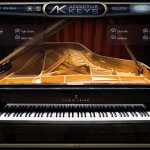The Science of Vibration: How Sound and Frequency Move Through You
Let’s Start With a Feeling
Remember that moment — maybe last week, maybe years ago — when a song hit you so hard your skin prickled? Or when a low hum in the background somehow untangled your thoughts? That wasn’t just mood. That was your body feeling sound.
Every note, every beat, every whisper — it’s all vibration. Physical waves traveling through air, water, even your skin and bones. A drum doesn’t just make noise — it shakes your ribcage. A singing bowl doesn’t just chime — it settles into your shoulders. Sound isn’t just heard. It’s lived.
In this piece, we’ll walk through what vibration really does in your body — no fluff, no overpromises. And yes, we’ll talk about those Solfeggio frequencies everyone’s whispering about. Not because they’re magic — but because they’re interesting. And maybe, just maybe, useful.
Vibration 101: It’s Not Rocket Science (But Kind of Is)
At its simplest: vibration is energy wobbling back and forth. Pluck a guitar string? It vibrates. Speak? Your vocal cords tremble. Tap a tuning fork? It sings — and sends ripples through the air.
How fast it wobbles? That’s frequency. Measured in hertz (Hz) — cycles per second. A bassline at 40Hz? You feel it in your gut. A piccolo at 2,000Hz? It zings in your ears.
And because your body is mostly water and tissue — both excellent conductors — those waves don’t stop at your eardrums. They slip inside. That’s why a deep note can make your chest buzz. Why a chant can rattle your throat. Why lullabies work better than logic when you’re trying to sleep.
What Happens When Sound Hits Your Body
Your body doesn’t just tolerate sound — it responds. Sometimes subtly. Sometimes dramatically.
- Your organs have favorite frequencies. Not in a mystical way — in a physical one. Your lungs, your gut, even your skull — they all have natural resonant points. That’s why some tones feel like they’re “landing” somewhere specific inside you.
- Your nervous system listens. Slow, steady rhythms? They whisper to your parasympathetic system: chill out. Heart rate drops. Muscles soften. Fast, punchy beats? They nudge your sympathetic side: wake up. Useful before a run. Less so at bedtime.
- Your brain syncs up. Called “entrainment” — your brainwaves can gently nudge toward the rhythm around you. A slow drone? Might ease you into alpha or theta (hello, meditation). A pulsing beat? Could sharpen focus or amp you up.
You’ve felt this. The gym playlist that gets you moving. The rain sounds that knock you out. The song you play on repeat when you need to cry. That’s not coincidence. That’s biology.
What Science Actually Says (So Far)
Let’s be real: not everything about sound healing is peer-reviewed. But plenty is.
- Music therapy? Solid. Hospitals use it to ease anxiety, manage pain, even support recovery after surgery. Not placebo. Measurable.
- Whole-body vibration? Studied for muscle recovery, circulation, even bone density in older adults. Those vibrating platforms at the gym? There’s actual research behind them.
- Brainwave entrainment? Promising. Binaural beats, isochronic tones — they’re not miracle cures, but studies suggest they can nudge mood, focus, and sleep in gentle, non-invasive ways.
Are we saying every “healing frequency” out there is proven? Nope. But dismissing the whole field because some corners are fuzzy? Also not fair. The body responds to vibration. That much is clear. The rest? We’re still learning — and that’s okay.
Solfeggio Frequencies: Ancient Tones, Modern Buzz
You’ve probably seen them: 528Hz. 432Hz. 639Hz. Called “Solfeggio frequencies,” they’re tied to old Gregorian chants, rediscovered in the 20th century, now all over meditation apps and YouTube playlists.
The claims? Big. The science? Still catching up.
- 528Hz — dubbed the “love frequency” or “DNA repair tone.” Some small studies hint it might reduce stress markers. DNA repair? Not proven. But calming? Absolutely possible.
- 432Hz — said to “tune” to nature, to the Earth, to your soul. Subjectively? Many find it smoother, warmer than standard 440Hz tuning. Objectively? No consensus. But if it feels better to you? That counts.
People use these tones in sound baths, yoga studios, even while working. Do they “heal”? Maybe not in a clinical sense. But do they shift mood, focus, or energy? Often, yes. And sometimes, that’s enough.
You Don’t Need a Lab Coat to Feel This
Vibration isn’t locked in research papers. You’ve been playing with it your whole life.
- Humming in the shower? That’s vibration massaging your vagus nerve — a direct line to calm.
- Singing bowls in yoga? Those long, shimmering tones? They’re not just ambiance. They’re physical waves washing over your nervous system.
- Sound baths? Lie down. Let crystal bowls or gongs vibrate around you. Cry. Feel lighter. No drugs. No dogma. Just physics.
- Your playlist? That’s you curating your own vibrational medicine. Upbeat for energy. Slow for wind-down. Minor key for catharsis. You’re already doing it.
How to Play With Sound (Without Buying Into Hype)
Want to explore? Keep it simple. Keep it real.
- Try a Solfeggio track. Not as a cure-all — as a mood-shifter. Spotify, YouTube, meditation apps — they’re everywhere. See how 528Hz feels versus 432Hz. No pressure. Just curiosity.
- Grab a tuning fork. Tap it. Hold it near your ear. Then against your collarbone. Feel the difference? That’s vibration, up close.
- Hum. Seriously. Low, slow, in your chest. Do it for 30 seconds. Notice your shoulders drop? That’s your vagus nerve saying thanks.
- Go to a sound bath. Even one. Let someone else do the work. Lie down. Let the sound move through you. No thinking. Just feeling.
And if you’re diving in — use decent headphones or speakers. Cheap audio can smear the frequencies. Doesn’t need to be fancy. Just clear.
Wrapping It Up
Sound isn’t background noise. It’s a force. A physical one. It moves air. It moves water. It moves you.
Ancient traditions knew this. Shamans. Monks. Healers. Now science is mapping it — slowly, carefully, beautifully.
Solfeggio frequencies? They’re one doorway in. Not the only one. Not the “right” one. But if they help you breathe deeper, sleep better, or just feel a little more grounded? That’s worth something.
So next time a song gives you chills — don’t just enjoy it. Thank it. Your body already is.
Want to go deeper? Have a look at my guide to Solfeggio frequencies.










